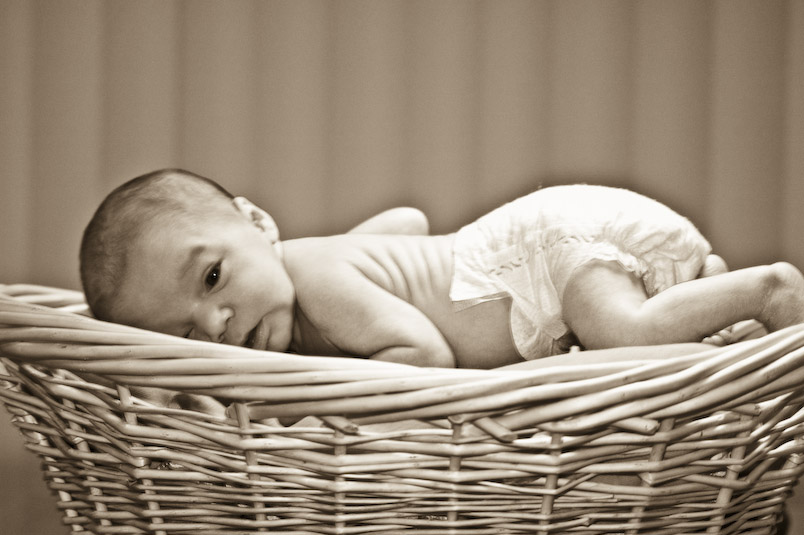Your infant has a rash, and her skin is not so baby soft. Or maybe your little one sniffles and sneezes often. Symptoms like these could be signs of an allergy.
Cow’s milk, dust mites, even the family pet can make the tiniest humans have an allergic reaction. If this happens, there are things you can do to help your child.
Food Allergies
About 6 million kids have a food allergy. It happens more often in boys than girls. Your baby or toddler can be allergic to any food and may react to more than one.
Peanuts are the leading trigger of food allergies in children. Other common ones are:
- Cow’s milk
- Eggs
- Fish
- Nuts from trees (like almonds, cashews, and walnuts)
- Shellfish (like crab, lobster, and shrimp)
- Soy
- Wheat
The most common symptoms of a food allergy in babies and toddlersare:
- Belly pain
- Coughing
- Diarrhea
- Fainting
- Hives or rash
- Nausea or vomiting
- Red rash around the mouth
- Runny or stuffy nose
- Swelling of the face, legs, or arms
- Tightness in the throat
- Trouble breathing, including wheezing
Food allergies can cause sudden and serious life-threatening symptoms. For example, your child might have extreme trouble breathing and a sharp drop in blood pressure that can cause shock. Signs of shock include pale, clammy skin and dizziness. This type of reaction is called anaphylaxis. You should get medical care right away if you notice any of those signs.
Your child’s doctor probably will give you something called an EpiPen that you can use to give her a shot of epinephrine (adrenaline) in case of an emergency. Use it at the first sign of symptoms.
There’s no cure for food allergies. But new studies have found that in the case of peanuts, it might be possible to prevent a severe allergy from developing by introducing them to high risk infants as early as 4 to 6 months. High risk infants are those with eczema and egg allergies. The American Academy of Pediatrics is encouraging the introduction of peanuts under doctor’s supervision.
Still, as a rule, if your child is diagnosed with a food allergy, he must stay away from the problem food, even in tiny amounts. Be sure to check all food labels for hidden ingredients, like peanut oil, and take care when ordering meals at restaurants.
- Food Allergies
- Seasonal Allergies
- Indoor Allergies
- Pet Allergies
- Diagnosing Allergies in Babies and Toddlers
- Treating Allergies in Babies and Toddlers
Some children outgrow a food allergy. but for others, the allergy may last their entire life.
Sometimes, breastfeeding infants get fussy after mom eats certain spicy or gassy foods like cabbage. Doctors don’t call this a true allergy because it doesn’t cause typical allergy symptoms, like hives or a rash – the most common symptoms of a food allergy. If your child fusses or cries every time you eat a certain food, call your pediatrician. It could be a sign of colic instead.
If your family has a history of food allergies, pediatricians recommend that you:
- Give your baby only breast milk until he’s 6 months old. It can make him less likely to have food allergies.
- Watch the amount of dairy, fish, eggs, and nuts you eat while you’re pregnant or breastfeeding.
But breastfeeding moms shouldn’t stress too much about their diet. There’s no proof that staying away from certain foods during breastfeeding can keep your baby from developing allergies or asthma. And kids with food allergies are 2 to 4 times more likely to have asthma and other allergies.
Seasonal Allergies
If your little one’s symptoms get worse during certain seasons, it may be hay fever, also called allergic rhinitis. This common allergy in kids causes sneezing, sniffling, and other symptoms when some trees, grasses, and weeds are in bloom. Pollen from trees and plants are among the most common allergy triggers in children.
The symptoms are the same ones adults have:
- Runny, itchy nose
- Watery eyes
- Sneezing
- Stuffy nose
Your baby or toddler also may have ear pain. Both seasonal and indoor allergies can lead to chronic ear infections.
Indoor Allergies
Your little one’s favorite stuffed animal could be an allergy trigger. Little specks of dust, called dust mites, make indoor allergies worse. And these mites collect in soft, cozy places likes plush toys and pillows. Mold, cigarette smoke, and perfume also can trigger indoor allergies in kids.
About 1 in every 6 kids has an indoor allergy. Symptoms are the same as seasonal allergies and include a runny, stuffy nose and sneezing.
You can help your little one feel better by doing these things:
- Change air duct filters once a month.
- Avoid wall-to-wall carpeting. It can collect dust.
- Sweep and vacuum regularly.
- Use allergen-proof zip-up covers for mattresses, box springs, and pillows.
- Wash linens every 2 to 3 weeks in hot water and dry them in a hot dryer.
- Place soft toys in a plastic, sealable bag and put it in the freezer for at least 5 hours once a week. This kills dust mites.
- Don’t use humidifiers and vaporizers. They add moisture to the air and increase the risk of mold and dust mites.
Pet Allergies
The family dog may be a cuddly source of comfort for your toddler. But pets can make some kids (and adults) sniffle and sneeze.
Pet allergies are a kind of indoor allergy. Cats are the culprit most of the time, but dogs can cause allergy problems, too. If your child seems allergic to your dog or cat, try an allergy-friendly pet, like a fish.
Diagnosing Allergies in Babies and Toddlers
Keep a diary of your little one’s symptoms — what they are and when they happen — to help the doctor figure out what kind of allergy your child has and how to treat it.
You may need to take her to an allergist (a doctor that specializes in allergies). He’ll ask about symptoms and personal and family health history. Be sure to tell him when symptoms happen, like after meals or during specific seasons.
Treating Allergies in Babies and Toddlers
Your child’s treatment may depend on the type of allergy he has. In general, the doctor may recommend the following to help with symptoms:
- Pills or liquids called antihistamines to ease skin rashes or a runny nose
- Inhalers to use when your child has trouble breathing
- An EpiPen for emergency treatment of a life-threatening reaction
- SOURCES:
- American Academy of Pediatrics HealthyChildren.org: “Infant Allergies and Food Sensitivities.”
- org: “Eczema.”
- March of Dimes: “Food allergies and baby.”
- American College of Allergy, Asthma & Immunology: “Children and Allergies.”
- Food Allergy Research & Education: “Food Allergy Facts and Statistics for the U.S.”
- American Academy of Pediatrics HealthyChildren.org: “Diagnosing Allergies.”
- American Academy of Pediatrics HealthyChildren.org: “Allergy Causes in Children: What Parents Can Do.”
Original article : https://www.webmd.com/allergies/allergies-babies-toddlers#1
Photo credit: Emery Co Photo on Visual Hunt / CC BY-SA

























Comments